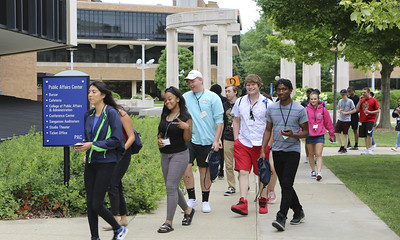Early analysis of college-readiness activities from high school graduates shows a mixed bag. The data could reveal higher attendance for the fall. On the other hand, it could show the beginning stages of a permanent change in community college enrollment patterns.
First, the number of high school seniors who have completed the FAFSA is rising nationally. Last year, the number of completers bottomed out at 49%. This year, to date, the number of completers exceeds 53.6%. Michigan lags this at 50.2%. This is 10% lower than this time last year. Ultimately, this seems to indicate that fewer Michigan high school seniors are planning to attend college in the fall.
Second, a growing number of colleges and universities will not require SAT/ACT scores for admission in 2023. Currently the number exceeds 1,700 schools. This is also an increase over last year. If last year is a guide, this indicates that those students who do plan to enroll in college will be taking advantage of the “standardized test score holiday” to apply to institutions they didn’t think they could otherwise get into.
Alongside those institutions that will not require applicants to submit test scores are institutions who are “test optional.” Many of the elite schools are moving to a test-optional status. A new wrinkle emerged in the last year: some schools have permanently eliminated standardized test score requirements. And a few schools have indicated that they prefer to do what their academic peers do.
June figures for FAFSA completions and testing requirements are important, as they are highly reliable indicators of what children plan to do.
Students are bypassing the community college transfer route
None of this is particularly good news for community college students. Transferring from a community college to the institution of their choice has been a time-honored way to get into the school of your choice. The primary drivers for that diversion were the perceived need to mitigate a bad standardized test score and cost of attendance.
Add to this the fact that community college outcomes are not stellar at the moment, and it becomes hard to see why anyone would want to take a less direct path to a university.
The big question for communities like Washtenaw County that support a community college revolves around what the administrators are doing to increase enrollment. From the community’s perspective, it is insufficient to raise the salary of the College’s top executive by more than 15.5% over the past three years and expect nothing in return.
University hopefuls who at one time supplied a steady flow of applicants are permanently changing their behavior. Our community colleges must change along with it if it hopes to remain relevant in the coming years.
Photo Credit: Illinois Springfield , via Flickr











